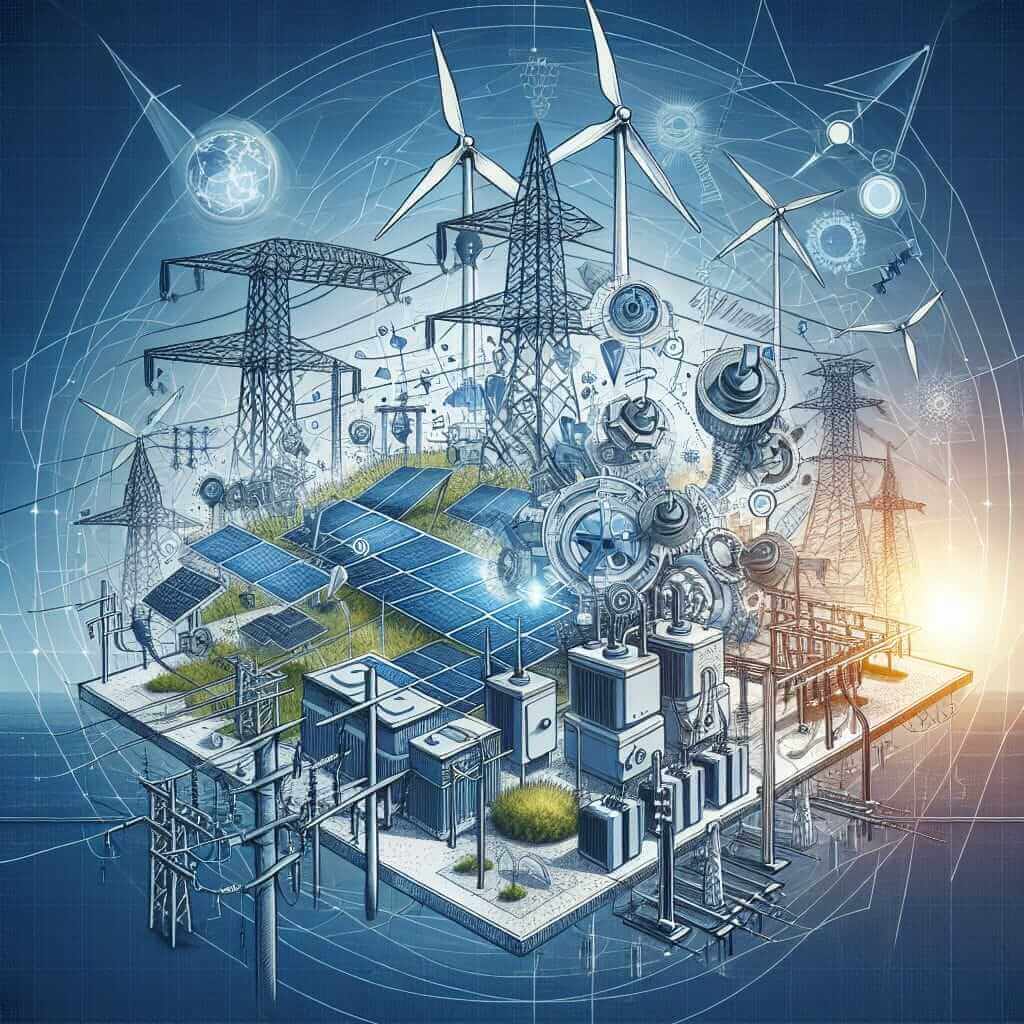The IELTS Reading test is a crucial component of the IELTS exam, challenging candidates to demonstrate their reading comprehension skills across a variety of topics. One recurrent theme in the realm of scientific and environmental studies is the impact of renewable energy adoption on the electrical grid. With the growing focus on sustainable energy sources, this topic frequently appears in various forms on the IELTS exam. This article will provide an in-depth reading exercise on “What are the effects of renewable energy adoption on the grid?” that mirrors the format of the actual IELTS Reading test, complete with a practice text, questions, answers, vocabulary, and grammar tips.
Practice Reading Exercise: Renewable Energy and the Grid
Practice Text – Medium Difficulty
Renewable energy sources like wind, solar, and hydro have become increasingly important as the world seeks to reduce carbon emissions and combat climate change. While renewable energy offers many benefits, its integration into the electrical grid presents a variety of challenges and effects that need to be considered.
Electricity generated from renewable sources is often intermittent and less predictable than energy from traditional fossil fuels. For instance, solar energy production varies with the time of day and weather conditions. Similarly, wind energy fluctuates based on wind speeds which are not constant. This unpredictability necessitates advancements in grid management technologies to ensure a stable and reliable energy supply.

One major effect of renewable energy adoption on the grid is the need for enhanced grid flexibility. Traditional grids were designed for a centralized power generation model, where electricity flows from big power plants to consumers. With renewable energy, power generation becomes more decentralized. This shift requires significant upgrades to the grid infrastructure to accommodate bidirectional electricity flow and to manage the variability in power supply.
Energy storage solutions, such as batteries, are increasingly essential in mitigating the effects of renewable energy’s intermittency. These storage systems store excess energy generated during peak production times and release it when production is low, aiding in the stabilization of the grid. Additionally, the development of smart grids, which use digital technology to monitor and manage the flow of energy, further enhances grid resilience and efficiency.
Another significant impact is the economic transformation associated with renewable energy integration. Local economies benefit from job creation in the renewable sector, but there are also costs associated with the transition, including investments in new infrastructure and technology. This economic shift requires policies and incentives to support both the development of renewable energy and the modernization of the grid.
Overall, while renewable energy adoption presents some challenges, its benefits for environmental sustainability and potential economic growth are significant. Ensuring a smooth integration process demands continuous innovation and strategic planning.
Practice Questions
Multiple Choice
-
What is one primary challenge mentioned in the text regarding renewable energy adoption on the grid?
A. Limited availability of renewable resources
B. Unpredictability and variability of renewable energy production
C. Excessive cost of renewable energy
D. Environmental hazards posed by renewable energy -
How does the text describe the traditional electrical grid?
A. Designed for decentralized power generation
B. Centralized with electricity flowing from large power plants to consumers
C. Inefficient and outdated
D. Primarily dependent on renewable sources
Matching Information
Match the statements with the corresponding sections (A, B, C, or D) from the text:
- Description of the traditional grid system
- Importance of energy storage solutions
- Economic impact of renewable energy adoption
Sentence Completion
- Renewable energy sources are considered __ because they help reduce carbon emissions.
- Smart grids enhance __ by using digital technology to monitor and manage energy flow.
Answer Keys
Multiple Choice
- B. Unpredictability and variability of renewable energy production
- B. Centralized with electricity flowing from large power plants to consumers
Matching Information
- Section B
- Section C
- Section D
Sentence Completion
- Renewable energy sources are considered important because they help reduce carbon emissions.
- Smart grids enhance grid resilience and efficiency by using digital technology to monitor and manage energy flow.
Common Mistakes in Reading Section
When tackling reading passages on the IELTS exam, students often:
- Misunderstand the keywords in the questions, leading to incorrect answers.
- Fail to locate the exact information in the text due to insufficient scanning skills.
- Confuse similar-sounding choices in multiple-choice questions.
- Struggle with time management, leaving some questions unanswered.
Vocabulary Highlights
- Intermittent (adj): occurring at irregular intervals; not continuous or steady. /ˌɪntəˈmɪtənt/
- Decentralized (adj): the distribution of functions and powers away from a central location or authority. /ˌdiːˈsɛntrəˌlaɪzd/
- Resilience (n): the capacity to recover quickly from difficulties; toughness. /rɪˈzɪliəns/
- Bidirectional (adj): involving, moving, or taking place in two usually opposite directions. /ˌbaɪdəˈrɛkʃənl/
Grammar Focus
- Complex Sentences with Relative Clauses: Used to add extra information to a sentence without starting a new one. Example: “Energy storage solutions, which are increasingly essential, store excess energy.”
- Passive Voice: Useful to emphasize the action rather than the subject performing the action. Example: “Significant upgrades to the grid infrastructure are required to accommodate bidirectional electricity flow.”
Conclusion and Tips
To excel in the IELTS Reading section, focus on improving your reading speed and comprehension. Practice regularly with passages on diverse topics, enhance your vocabulary, and familiarize yourself with various question types. Analyzing and learning from your mistakes will also help you to avoid them in the future. Remember, consistency and strategic preparation are key to achieving a high score in the IELTS Reading test.